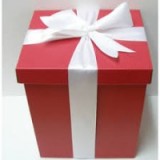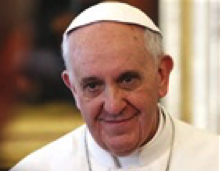 As we wind down the year, ’tis the season for celebrations. Unfortunately, feeling overwhelmed may be an unwelcome tradition for many of us. Last minute shopping, traffic back-ups, and the rush to decorate can make this time anything but joyous.
As we wind down the year, ’tis the season for celebrations. Unfortunately, feeling overwhelmed may be an unwelcome tradition for many of us. Last minute shopping, traffic back-ups, and the rush to decorate can make this time anything but joyous.
There’s a lot to do and think about. But help (SOS) is on its way! By incorporating organizing and productivity solutions, you can focus on what really matters – the joy and merriment of the holidays.
Streamlining and Sourcing-Out are two ways to increase productivity and manage responsibilities, including holiday traditions. Write down the tasks you need and/or want to accomplish and think about ways in which you can make things more efficient and still effective. Consider these potential tasks:
DECORATING
HOSTING
GIFT SHOPPING
Less to think about and do means more time staying in the present. And staying in the present is the best gift you can give yourself.
 When I read this headline, I had to smile: The Green Pope: Francis is putting the full weight of the papacy behind efforts to curb climate change. Many Professional Organizers base their businesses on being ‘green,’ recycling, and simplifying the homes and lives their clients lead. After being glued to the television for the Pope’s entire visit to the United States (I was painting my bedroom at the same time), I couldn’t help but see a connection between this incredible man and some of the same ideals that relate to the environment and the business of professional organizing. After the Pope’s visit, I did some research, and two documents written by the Pope stood out.
When I read this headline, I had to smile: The Green Pope: Francis is putting the full weight of the papacy behind efforts to curb climate change. Many Professional Organizers base their businesses on being ‘green,’ recycling, and simplifying the homes and lives their clients lead. After being glued to the television for the Pope’s entire visit to the United States (I was painting my bedroom at the same time), I couldn’t help but see a connection between this incredible man and some of the same ideals that relate to the environment and the business of professional organizing. After the Pope’s visit, I did some research, and two documents written by the Pope stood out.
The first document was published on June 18, 2015, when Pope Francis released the encyclical Laudato Si: On Care of Our Common Home. In this document the Pope calls on all nations and peoples to address urgent environmental concerns, including climate change. Francis reported that this encyclical was not really an environmental document; rather, it highlighted the developed world’s indifference to the destruction of the planet while pursuing short-term economic gains. The Pope states, “Never have we so hurt and mistreated our common home as we have in the last two hundred years.” Professional Organizers work with clients every day to set up home recycling centers, and the significance of that labor isn’t lost on us; we are helping our clients save the planet one household at a time.
The second document released by the Pope was The 15 Diseases of the Curia. The Curia Romana is the papal court, or the people who assist the Pope in the government and administration of the church. Pope Francis explains that these ‘diseases’ do not only concern the Curia “but are naturally a danger to every Christian, every curia, community, congregation, parish and ecclesiastic movement.” Number 13 on the list is the disease of Hoarding. In layman’s terms, a person tries to fill an existential void by accumulating materials goods, not out of need but only in order to feel secure and, as a result, burdens the soul. As a nation, we see this every day as shopping has become the national pastime, and anyone can accumulate goods 24/7 by using the internet and television. When people become overwhelmed with clutter and don’t know where to turn, very often it is the Professional Organizer who gets the call for help.
Finally, my hope is that no matter what our religious preference, we all take the words of Pope Francis to heart and be responsible stewards of our planet– our first home.
Clutter Quote: “Creation is not a property, which we can rule over at will; or, even less, is the property of only a few: Creation is a gift, it is a wonderful gift that God has given us, so that we care for it and we use it for the benefit of all, always with great respect and gratitude.” Pope Francis
 While visiting Italy I learned the maxim, Americans Live to Work, while Italians Work to Live. Their work day seemed a little longer, but the pace appeared less frenetic. They started a little later but enjoyed leisurely lunches and animated banter with coworkers.
While visiting Italy I learned the maxim, Americans Live to Work, while Italians Work to Live. Their work day seemed a little longer, but the pace appeared less frenetic. They started a little later but enjoyed leisurely lunches and animated banter with coworkers.
Sitting in cafes observing the Italian lifestyle was as interesting as taking in their architecture. They appeared to savor the moment, dining alfresco, without waiting for the weekend to jam chores and fun into forty-eight hours. I admired this philosophy and tried to integrate it into my life upon return.
I became more aware of certain turns of phrase here in the States. Sentences such as, “I have to Chair the fundraiser again this year,” now had a different ring to them. When someone said, “I have so many events and obligations, but I can’t eliminate any of them,” it somehow sounded different.
Many of us approach work with the same mentality. Is there something about our culture that equates being busy with a badge on honor? Are we concerned about appearing lazy if our schedules are less than hectic? I’ll admit to needing to learn to say no. It’s not easy.
How does this relate back to time management? Simply stated, the way we use our time can often be a manifestation of our beliefs.
If we believe that anything less than busy is unambitious, our calendars will be filled accordingly. If we want a life that reflects our goals and dreams, decisions should be made mindfully before the calendar fills up.
In terms of time management, often the goal is to try to fit more tasks into our life. I lean toward minimalism in my organizing practice, and I believe the same minimizing principals can help us with time management. Yes, we need to plan work, meetings, errands, and time with friends and family. The idea here is to step back and do all this mindfully. Start with your goals or the goals of your family. We can work and give back, but we can do so joyfully. Here are some points to remember:
Business and pleasure don’t need to be separate. As long as you conduct yourself with appropriate decorum, work can be fun too. Live in the moment. Strive to be present. It certainly seems to work in Italy.
The Philadelphia Hoarding Task Force, a coalition seeking to improve the outcomes surrounding hoarding issues, hosted a hoarding intervention workshop led by Jesse Edsell-Vetter. Jesse presented an innovative intervention model that he has developed and implemented with an impressive 98% success rate. The key to his model is the shift of focus from the “stuff” to the person.
In the past, Jesse, a Case Management Specialist with the Metropolitan Boston Housing Partnership, had used a common approach when dealing with hoarded homes. He would explain the health and safety issues and cite the code violations that had to be resolved to prevent eviction. After leaving the person alone to address these issues, follow-up meetings predictably showed little-to-no progress. A clean-out was the inevitable next step, costing an average of $10,000. Over time, Jesse observed the homes return to their hoarded state. Focusing solely on the clutter has proven to be extremely costly and unsustainable as a treatment option. Beyond the monetary cost, the emotional trauma is also a factor. In one tragic example, a family returned to their home after the clean-out and committed suicide.
In response, Jesse shifted his approach from focusing on the “stuff” to focusing on the person: who they are, their commitments, their struggles and what moves them. For the majority of us, life’s challenges leave scars and hurts that dissipate with time. For people with hoarding behavior, woven in the items they hoard are their scars on display for all to see and judge. While a clean-out removes the “stuff,” it does nothing to unlock the stories and hurts interwoven in the piles. Jesse’s model, in contrast, coaxes these stories out with respectful, compassionate and nonjudgmental interactions emphasizing the human side of the clutter, lessening the grip of extreme hoarding habits.
During the workshop, Jesse shared a case study about Bob, an elderly man challenged with health problems, living alone, facing eviction, and surrounded by paper piles, some as high as seven feet tall. Rather than mandate compliance to codes and leave Bob alone to manage his stuff, Jesse explained the safety requirements to Bob and asked how he could help. Jesse gained Bob’s trust with empathic statements like, “I worry that X” and “I am concerned because Y.” As Jesse rolled up his sleeves and sorted through the piles with Bob, he asked questions such as, “Tell me about your X” or “Tell me about these papers I see.” This technique of “curious questioning” revealed Bob’s vulnerabilities (mental and physical health, traumas, and family history), his cognitive processes (problem solving, attention, and executive functioning skills) and his core beliefs (values, responsibilities, and how he sees his place in the world). Jesse learned that Bob came from a very religious family. Three of his sisters were nuns, and he himself had wanted to be a priest. Struggling with his sexuality, at age 20 Bob told his family he was gay. He was then shunned by his family and his religious community. Fast forward from that time in the early 1960’s to the present day, Bob’s apartment was a manifestation of that devastating loss. One item Bob hoarded was church bulletins. He attended church services every day, each day taking copies of the bulletin with the intention of sharing them with others. From the overwhelming piles, it was obvious though that this rarely happened. Using a team approach, a cornerstone of his intervention model, Jesse invited Bob’s priest to collaborate. Seeing how committed Bob was to his religion, the priest asked Bob to assist him in providing communion to people who were unable to attend church. In that moment, Bob recovered his purpose in life and adopted a healthier expression of his deep connection to his church and community.
Bob’s story illustrates the human side of Jesse’s 98% success rate, showing what’s possible when we leave our judgments at the door, stop addressing the person’s “stuff” and instead, unlock the stories and hurts buried in the hoarded piles. When intervention models lead with the threat of a clean out, walls go up, but, as Jesse has shown, when the intervention is infused with respect, non-judgment, curious questioning, statements of concern, clearly articulated expectations and actions, motivation and genuine praises for milestones met, partnership and collaboration becomes possible and the work of letting go and healing begins. In Bob’s case, when the priest invited Bob to help him, Bob was able to connect to his life again and the importance of his “stuff” could take a back seat.
Trying to know everything about the Internet is as impossible as reading every book ever written. Like the spooky spider webs (real and synthetic) that accent our autumn décor, the fingers of the world-wide-web stretch and reach into sometimes unexpected corners of our lives. Schools, grocery stores, medical offices, places of employment and social groups – it is hard to find areas of life that are not touched. Yet, while technology races to manage our world, how well are we managing technology?
No matter where you find yourself in this digital age — ahead of the curve, just keeping up, or lagging behind — step away from the shivers you feel about getting caught in the web. Here are suggestions of some free tools and applications that I, myself, have found useful. They have helped me create order and ease in different areas of my daily life.
When You Shop: If you keep your cell phone with you, use it to store your shopping lists. Simply take a picture of your refrigerator grocery list before leaving the house or have a family member text you a picture of it when you’re at the grocery store. Create your list in an “app” such as Remember The Milk. And toss all those plastic loyalty and club cards. Use an app called Key Ring and they will always be with you when you need them.
Appointment Management: Phone calendars are wonderful for helping keep track of appointments and deadlines. They even offer the ability to set alarms. Go a step further and set up a shared calendar for your family in Google so you can know who needs to be where and when.
Travel Help: Have you ever been traveling and needed to find a gas station, restaurant or restroom? Don’t want to end up in a less than desirable location? Use the Yelp app to find something local and reviewed by others. Want to catch a movie on the fly? Try the Flixster app to find what’s playing now in your current location.
Files at Your Fingertips: Whether used for business or not, this can be more handy than you might think. Try creating a medical file in Evernote or Dropbox with snapshots of test results, medications and procedures. Bring an iPad or tablet to your doctor appointments and pull them up so your doctors can scroll through them easily. Similarly agendas, contact lists, and meeting notes for your association or social club meetings can be saved online. Even if you prefer bringing printed copies, storing them in Google Drive is a great backup plan. If you get into a bind and are caught without the printouts, you can log in to your Google account and access the notes on your phone or tablet without having to stop home.
I challenge you to choose one new techno-solution this month and see if it can help you streamline an aspect of your life. Don’t wriggle helplessly in a web constructed by someone else. Use technology to create your own web of control and order. Replace your fear of the Internet by spinning a web of your own design.
Can you believe it’s October already? Where have the last 10 months gone? With the holidays on the horizon, now is a great time to get your kitchen organized, whether or not you plan to use it a lot in the coming months. There is nothing like a healthy kitchen makeover.
Having a kitchen that is well organized, stocked with healthy foods, and free of nutritionally deficient ones is important if you want to upgrade the quality of food that you and/or your family are eating and make it easy to prepare quality meals.
Here are 5 tips to get you started and to help you maintain what you’ve already organized.
1. Store items near where you use them. Store your dishes and utensils near the dishwasher. Store your pots, pans, and bakeware near the stove and oven. Make sure all your plasticware have bottoms and lids that fit together. This will save time, energy, and space when you need them and ease putting them away.
2. Arrange “like” with “like” in your pantry. Keeping similar items together makes it easy to know how much of an item you have and if you need to buy more. For example, keep all pastas on a shelf, soups on another shelf, and condiments on a 3rd shelf.
3. Keep masking tape and a Sharpie near your leftover containers and/or plastic bags. Having supplies at the ready allows you to easily label every leftover with the date and contents. Store leftovers in one place in the refrigerator. This will help you throw out expired food and will remind you to go through your refrigerator and cabinets for any other old food items.
4. Store extra plastic bags in one larger plastic bag or a container. Storing all the bags in one spot makes it easier to find them when you are in a hurry and to recycle them for future use.
5. Keep counters clear. Store seldom-used appliances in another area of the house (e.g., on a shelf in the basement, hallway closet or garage). This will free up counter space to prepare meals.
Making some simple changes will help you get the most out of your time in the kitchen. You will save time, energy, and space keeping things where you use them. An organized kitchen makes it easier to cook at home to improve and maintain a healthy lifestyle. You will save money eliminating duplicate and triplicate purchases and by eating out less. Family members will be able to help with meal preparation and clean-up when they know where things are stored. Finally, your life will be simplified, and you will be able do the things you really want to do.
What are you going to do to make your kitchen a healthy area of your home? Now is your time to go From Bedlam to Brilliance!